| Templot Companion | search | remove search highlighting | if the A-Z Index tab is missing click here |
Prototype information
revised 4-March-2003
This page contains a miscellany of information useful in Templot, and model railway track in general.
For more information about prototype track, see also the real track page.
The Gimp
The GIMP is a free image editing package which includes perspective correction tools. This makes it possible to take measurements and make track drawings directly from photographs of prototype trackwork. Click Gimping track photographs for a detailed look at the process and its use in Templot.
You can also use The Gimp in general modelmaking as a way of creating a drawing from a photograph. Click A Gimp example for a worked example.
Here is some data for use in creating industrial turnouts in Templot. Use this data to set a custom straight switch. The dimensions given are a silly mix of metres and millimetres - direct conversions from what are in fact imperial designs. For example the first dimension in the table is 1.829 metres which is exactly 6ft (72"), 2.743 metres is 9ft (108"), and so on. For BS-95R rail (model code 75) the heel offset is 121 mm (4.75"), giving a heel clearance of 2" for rail 2.75" wide.
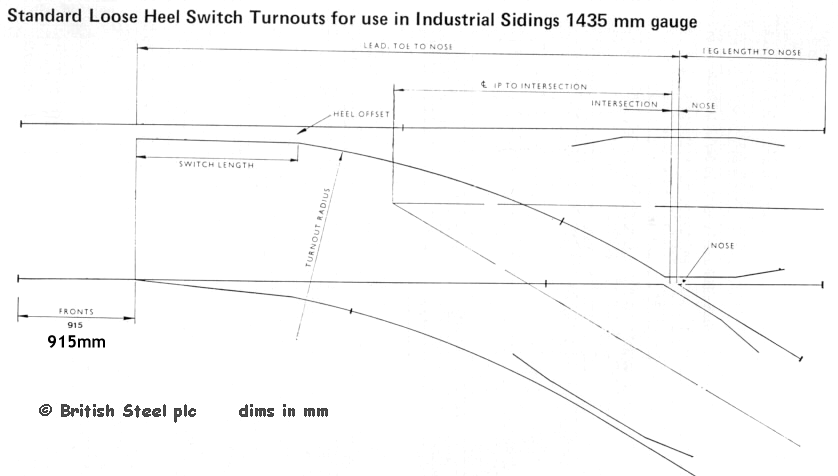
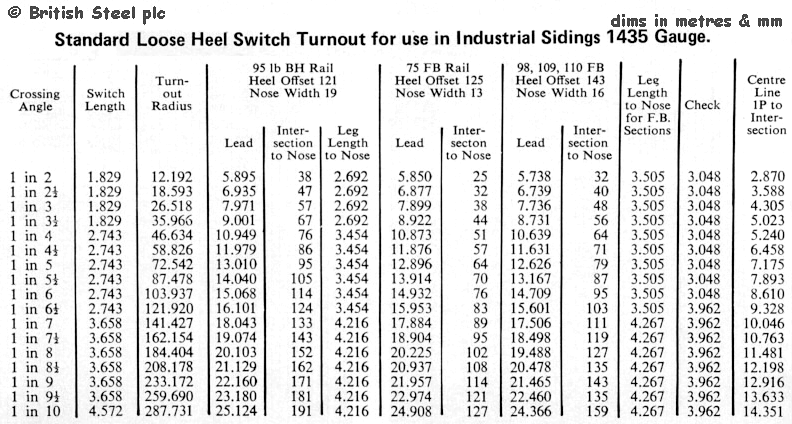
Crossing data ( BS-95R BH, FB-109, BS-110A, BS-113A-inclined )
Here is some prototype data for crossings. The dimensions given are a silly mix of metres and millimetres - direct conversions from what are in fact imperial designs. For BH the blunt nose width is 19 mm (3/4"). For FB the blunt nose width is 16 mm (5/8"). (Dimensions for GWR and BR(W) BH crossings differ.)

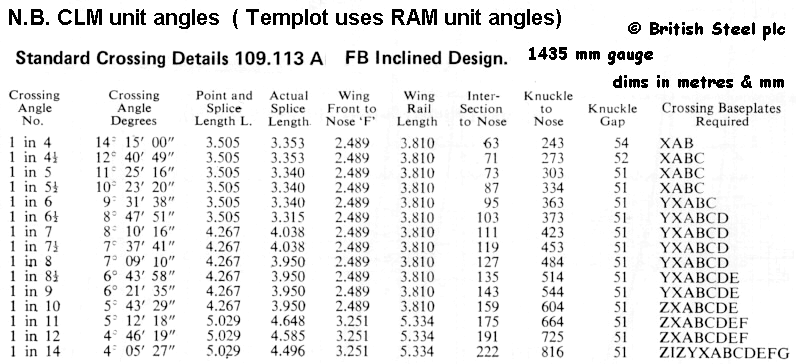
Here is some chairing info for bullhead crossings and REA switches :
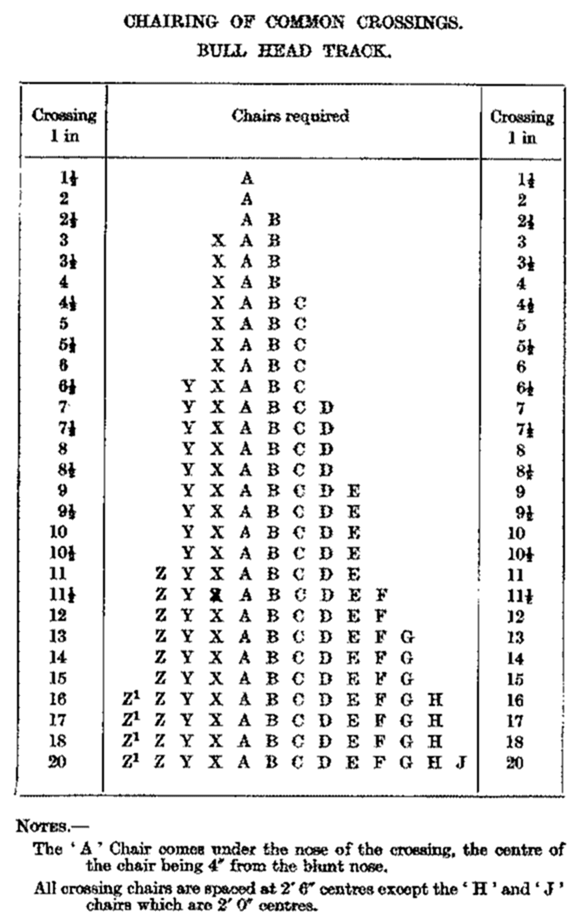
These are the special chairs used at the crossing. The X,Y,Z chairs count back towards the switch; the B,C,D, etc. chairs count out beyond the crossing. The A chair is always under the nose of the vee. Where no special chair is shown in this table standard chairs are used, or sometimes bridge chairs where space is tight. The indistinct dimensions in the notes are 4in, 2ft 6in, 2ft 0in (the latter is for the rail joint). All chairs are central on their timbers, so these dimensions are also the timber spacings.
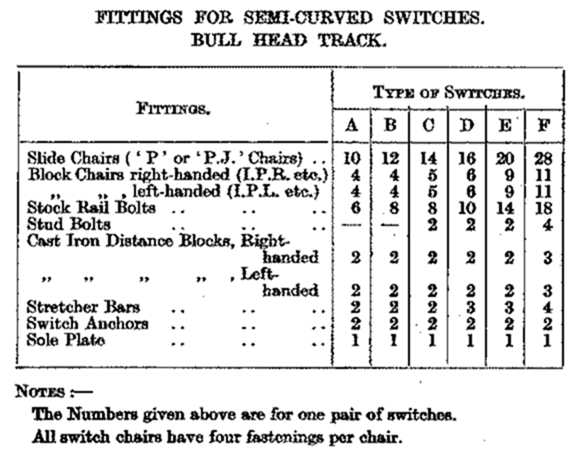
These are the special chairs used for REA semi-curved switches. The numbers are the total for the whole switch, i.e an A switch has 5 P chairs per switch blade.
P chairs are the ones on which the switch blade slides and to which the stock rail is fixed by means of a bolt through the rail web instead of a key. Block chairs come next and hold the both the switch blade and stock rail at the correct spacing (these are handed and numbered 1,2,3 etc.). The bolts and distance blocks fit between the rails to keep everything secure.
So for a B switch each side has (counting from the rail joint) :
2 standard chairs in front of the switch toe,
6 slide chairs,
4 block chairs,
Standard chairs and bridge chairs are then used as space on the timbers permits.
PJ chairs are a later design in which the outer jaw is in the form of a separate spacer block, similar to flat-bottom slide baseplates.
link to this page: https://85a.uk/templot/companion/prototype_information.php